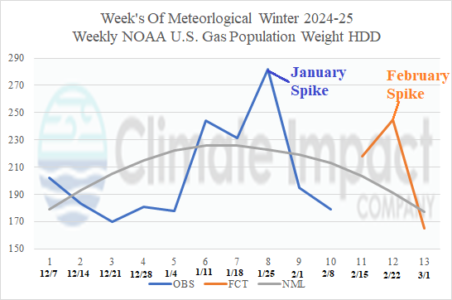02/13/2025, 11:38 am EST
Another cold peak is ahead for next week in the U.S. causing natural gas prices to rise. Forecasts are trending colder, and additional price rise is possible. Next week's cold is impressive but not quite as strong as the mid-winter episode.




